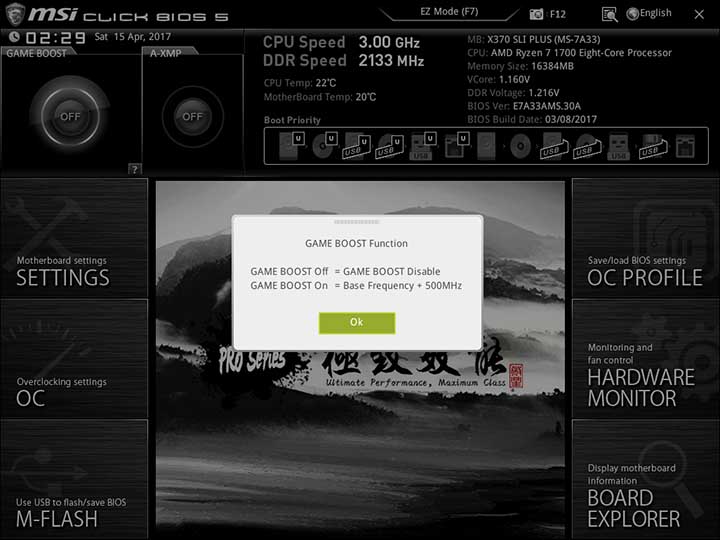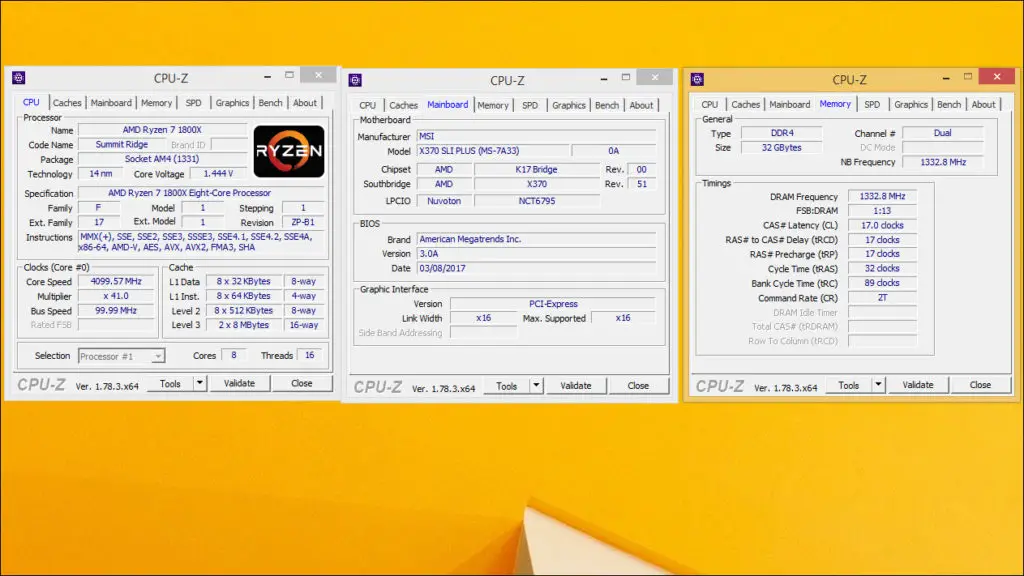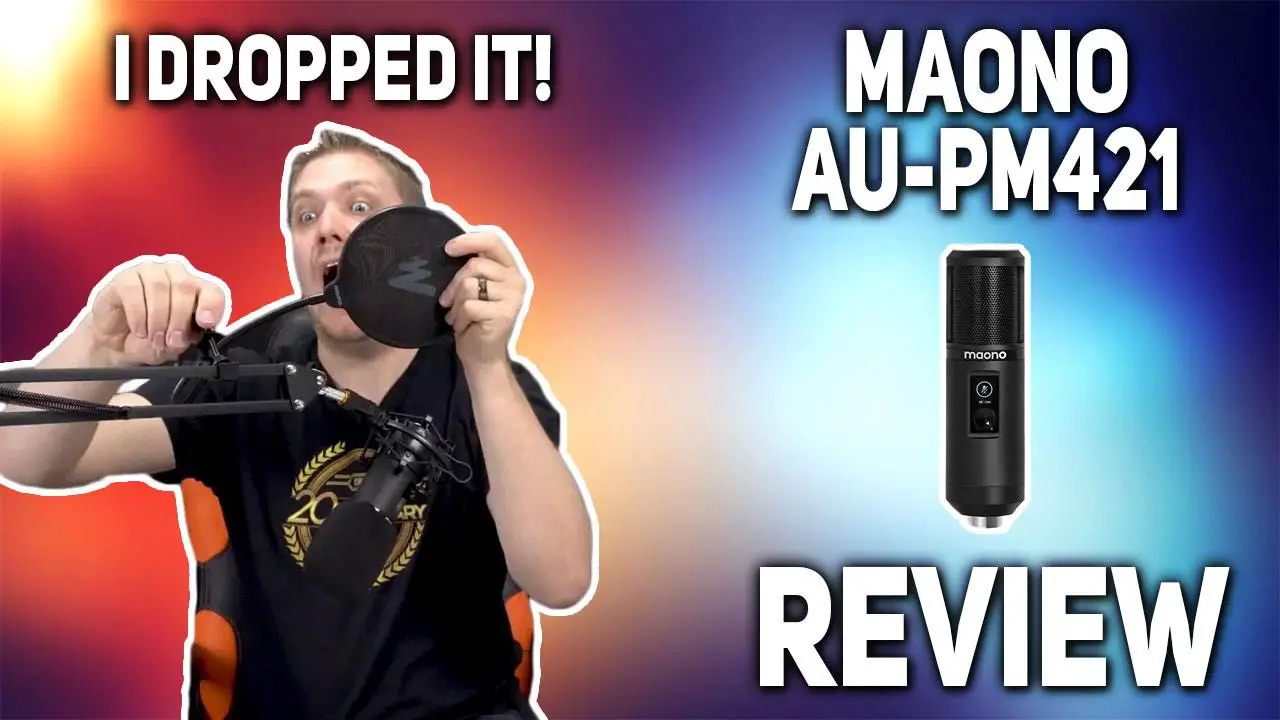As we have all come to expect from MSI, overclocking the MSI X370 SLI PLUS boils down to two different way: the easy way and the manual way. The easy way, or ‘automatic overclocking’ comes in the form of MSI Game-Boost and A-XMP options.

Unlike higher priced X370 boards MSI does not include an actual ‘easy button’ or dial that you can crank all the way to 11. Instead to activate the single Game-Boost option setting owners must first enter the BIOS and click on the large red button in the upper right corner of the screen. Basically when you click this ‘easy button’ the system will reboot, and a fairly heavy overclock (by Ryzen 7 standards) will be automatically applied to the CPU’s cores. The end result is the same, but we do like physical options over BIOS only based options. This cost cutting is to be expected as this is a $150 motherboard and not a $300 board. To our way of thinking a physical button is really not worth the extra expense as the end is the same: an overclocked system via a single click of the mouse.
Or to be more precise it should in theory provide a working overclock. In reality it is a bit of a work in progress as the single profile is extremely aggressive so it may not work with all Ryzen 7 CPUs. It did not like our 1800X and resulted in a system that would not POST (this is Ryzen’s ‘polite’ way of saying an overclock will not work). It did however boost our 1700 by 500Mhz and made it more than a match for the typical 1700X. As such we consider this a great feature for lower end Ryzen 7 CPU’s but your results may vary on the higher end CPUs – as their overclocking abilities is extremely limited right now.
If you so wish you can also click the A-XMP button next to it and as the name implies it will boost RAM performance by implementing the XMP profile on the RAM…ish. As we all know Intel created XMP and as such the XMP profile imbedded in the RAM is meant for Intel based systems only. What MSI has done is with a select few sets of sticks (the number compatible is growing but is a work in progress) is allow the MSI motherboard to read this profile and implement a variation of it meant for AMD systems. Unfortunately, while this is a pretty nifty feature when it works it is limited. For example, our Ballistix 2400 and both sets of HyperX RAM we had on hand (2400 and 2600) are incompatible. As such you have to manually enter them in. As time goes by MSI will expand their line-up of compatible RAM so we are not overly concerned.
For a lot of the MSI X370 SLI PLIS users the Game-Boost and A-XMP options will suffice but if you do wish to eke out a bit more performance the only way to go is the manual route. We must admit that we did enter the manual overclocking phase of testing with a bit of trepidation. We say this as when we first saw that the power delivery subsystem was based on RichTek and not an Intersil controller we were a bit disappointed. On the other hand the BIOS is feature rich and sure to please the typical mainstream user – only enthusiasts will be a tad disappointed but once again this is a more value orientated motherboard.
Thankfully, our concerns proved to be unfounded as the MSI X370 SLI Plus’ less than awe worthy power delivery subsystem proved to be more than up to the task. Of course, this is partially due to the fact AMD Ryzen 7 CPUs are not exactly known for their amazing overclocking potential, but it is mainly due to the fact that this power subsystem is still more than good enough. We doubt many overclocking awards will be won with it, but when dealing with immature CPU designs like the Ryzen 7 it is more than enough. So much so that this board hit the same overclocking wall as the more expensive ASUS Crosshair VI Hero – albeit it did need more slightly more voltage to be fully stable.
Will the RichTek controller prove to be a handicap in the future? Possibly. But for the time being it is more than enough to max out a AMD Ryzen CPU. To put this another way, you will be trading ‘future proofing’ (and hopes of better AMD Ryzen CPUs coming down the pipe shortly) for less upfront cost. Considering the chances of AMD not being able to mature this tech before this inexpensive board is replaced by next generation AMD chipset based motherboards are not exactly great that is not that big a risk. Honestly, we doubt AMD will surprise us and it will not be until Ryzen 2.0 comes out – probably in 12 to 24 months – that the X370 SLI Plus will become an actual real world handicap. In the meantime that extra money saved can be used for a better GPU, a better storage device… or even just saved and put towards the next build you have in mind.












